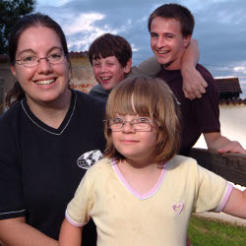Action for Children is planning to boost its investment in fundraising in a bid to offset the vagaries of public sector contract funding.
The charity, one of the UK's biggest providers of local authority children's services, has already introduced some new initiatives in the last year or so to generate more voluntary income, in response to budget cuts and an increase in demand for its services.
Women Taking Action engages high-value donors to invest in early-intervention services, while the Giant Wiggle event employs author Eric Carle’s famous character the Hungry Caterpillar to inspire supporters to organise sponsored walks for kids under five.
But this year, according to its 2014 annual report and accounts published recently, the children’s charity plans to go further to reduce its reliance on contract income.
The charity has begun a review of its use of digital media, in an effort to better understand how people use social media to connect, donate and campaign and enable the charity to tailor its messaging more effectively.
Total income fell marginally from £180m in 2013 to £179.6m, while spending reduced by just over £4m to £168m. This resulted in a surplus of £11.1m which, along with various other balance sheet movements, enabled Action for Children to boost its general reserves by nearly £5.5m to £34.8m, at the upper end of its target range.
The vast majority of the charity’s revenue, £156m, came from service delivery contracts, with £18.2m was derived from donations and legacies. Five years ago income from services topped £172m with donations and legacies at £16.5m.
During the 2013/14 year, the charity’s 650 services helped more than 300,000 children and their families, 50,000 more than the previous year even though the number of services dropped by 17.
The charity claimed a victory for its three-year campaign for children not to be victims of antiquated laws governing their protection when the Queen’s Speech in June included a commitment to amend the 80-year-old criminal law on child neglect.
Staff numbers decreased again, from 3,912 full-time equivalents to 3,781, but the charity did not respond to questions about whether this was due to redundancies or natural attrition. However, according to the report its staff engagement index went up by 23 per cent to 80 per cent – a “significant improvement” on last year.
The charity is now developing a new strategy for the period 2014 to 2017. It aims to reverse recent-year falls in contract income and donor numbers by making investments to “raise our profile and actively engage the public in supporting us”.
The new business plan represents a shift from one-year to three-year budgets.
The charity said that its financial result for the year was an improvement on last year but “we are mindful of the continuing pressure on local authorities’ funds and possible reduction in our income.
“So, to enable us to maximise our services to children and young people we are looking to invest in fundraising to deliver ongoing future income…this will require investment next year.”
Asked to elaborate, a spokeswoman told Civil Society News: “We will be investing in individual giving programmes over a longer, three-year, term. As a result, we will be re-aligning our team resources to support individual giving and donor stewardship.”
Last year the charity confirmed it had made 118 people redundant as it tried to balance its budget.








